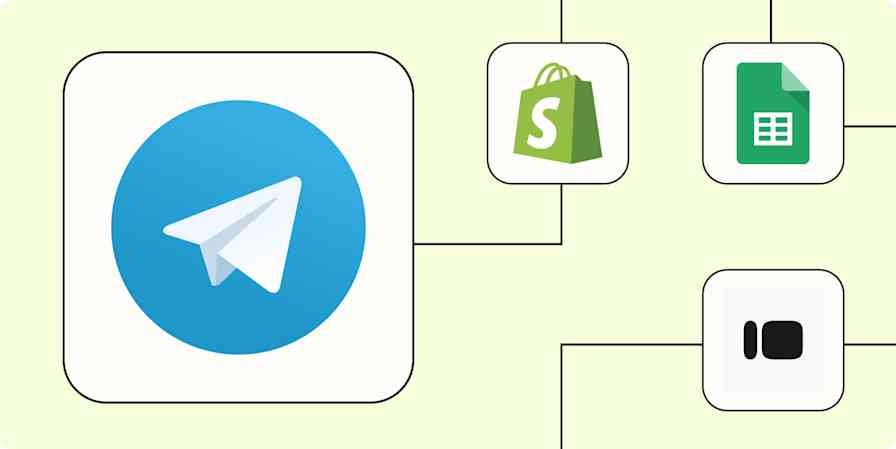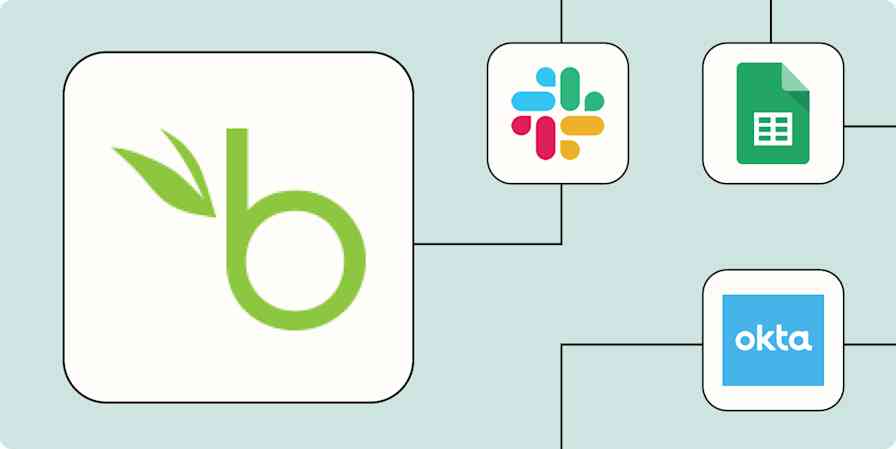ChatGPT, dubbed the "original" AI chatbot for obvious reasons, just got faster and more powerful thanks to OpenAI's latest model—GPT-4o.
Built with the intelligence of GPT-4, this newest release has improved capabilities across text, voice, and vision. And, with Zapier's ChatGPT integration, you can pull in the power of this model directly into your workflows. That means you can automate the things you already do in ChatGPT and move data across thousands of apps.
For example, want ChatGPT to interact with your teammates and answer common questions directly in Slack? Or perhaps you want ChatGPT to reply directly to customer queries in Facebook—using your tailored company documentation.
Whatever your use case, we'll show you different ways to pull in the power of ChatGPT into Zaps—Zapier's automated workflows.
Table of contents
Did you know: When you connect your favorite AI tools to other apps in your tech stack with Zapier, you'll likely need to build a 3-step Zap. Read more on how to effectively add AI to your Zapier workflows.
What's the difference between Zapier's ChatGPT and OpenAI integrations?
There are a ton of different ways to use our ChatGPT integration, and some of them are quite similar to our OpenAI integration. But there are a couple of differences to keep in mind.
For starters, the ChatGPT integration is designed primarily for conversations—and its responses will often be in chat format.
What's pretty neat about that is the ChatGPT integration can remember conversations, so in certain instances you can build workflows with a memory. Say, for example, you're building a Zap that has ChatGPT answer questions that are posted in a specific Slack Channel. By adding a word to the memory key field, ChatGPT will remember the user's previous conversation history and can respond accordingly to follow-up questions.
For any workflow you set up with the ChatGPT integration, you can provide it with more tailored training instructions and incorporate important company information like FAQs, writing guidelines, or other rules you want ChatGPT to incorporate into its answers. It's a pretty handy way to instruct ChatGPT to have better conversations versus just one-time prompts.
On the other hand, the OpenAI integration uses completion models (GPT-3.5-turbo-instruct) to generate text for certain actions but does not have built-in conversation memory. You might use the OpenAI integration to create outlines for blog posts or respond to certain briefs.
One of the main differences is that it has multiple actions which are broader and incorporate more of OpenAI's other features like Whisper. That means you can send prompts to generate text, create transcriptions with Whisper, and more within your workflows.
Which model should you use with our ChatGPT integration?
Let's not over complicate things. We recommend using GPT-4o mini as your go-to model, as it's designed to cover any fast, lightweight tasks you need when automating. Plus, it's OpenAI's cheapest model yet, cheaper even than GPT-3.5 Turbo.
Tip: If you've already built Zaps using GPT-3.5 Turbo, we recommend switching over to GPT-4o mini. You might as well take advantage of the reduced costs and higher textual intelligence. (You may need to retest your prompts to get the same output as before.)
If you do need something more sophisticated, or you find the output isn't good enough, then try upgrading to GPT-4o, OpenAI's most advanced flagship model. See how they stack up below:
GPT-4o mini | GPT-3.5 Turbo | GPT-4o | |
|---|---|---|---|
Cost | GPT-4o mini is the cheapest model, costing $0.15 per million input tokens and $0.60 per million output tokens | GPT-3.5 Turbo costs $0.50 per million input tokens and $1.50 per million output tokens | GPT-4o costs $5 per 1 million input tokens and $15 per 1 million output tokens |
Features | Supports text and vision capabilities | Supports text capabilities | Supports text and vision capabilities but has stronger vision capabilities |
Tasks | OpenAI's most affordable and intelligent small model designed for fast, lightweight tasks | OpenAI's fast, inexpensive model for simple, everyday tasks | OpenAI's most advanced, flagship model designed for complex, multi-step tasks |
Context length | 128,000 tokens | 16,385 tokens | 128,000 tokens |
Recommended for | Fastest speed and lowest cost | Lower cost in comparison to GPT-4o | Highest intelligence or reasoning about images and text |
Want to know more? Check out OpenAI's pricing structure and other supported GPT-4 models.
Build—and interact with—AI assistants in other apps
Ever wanted to have your own AI assistant that can chat with team members or customers and solve issues in other apps, like Slack or Gmail?
These Zaps help you create anything from an accounting assistant that can answer employee questions in a specific Slack channel to an analysis assistant that can analyze blog performance or KPIs.
And because our ChatGPT integration brings ChatGPT's own functionality into your Zaps, you can upload your own files and have your AI assistant answer questions based on your company documents. Or it can write and execute code and analyze structured data from a CSV—the possibilities are endless!
If you're just starting out with ChatGPT and want to experiment with its capabilities in Slack, you don't have to create an assistant. You can still have a conversation with ChatGPT right inside Slack when a prompt is posted in a particular channel. With this simple Zap, you and your team can easily ask questions and get responses—without leaving Slack:
Start a conversation with ChatGPT when a prompt is posted in a particular Slack channel
Nurture and qualify leads
For your sales and marketing teams, determining which leads are mostly likely to convert is a process that takes up valuable time and resources.
You can use AI and automation to bridge that gap. For example, say a lead visits your pricing page or signs up for a free trial. You could use a Zap that logs this activity, and then adds these leads to relevant nurture campaigns or to your CRM with an AI-generated message or summary. Or you could use a Zap that uses AI to summarize sales calls with prospects, so your teams know who's ready to convert.
Include new leads and contacts into nurture campaigns based on recent website activity
Generate and share content
As a writing tool, ChatGPT is a pretty decent time-saver when it comes to generating first drafts. But with the ChatGPT integration, you can take that a step further by incorporating the creation of blog outlines, emails, and articles into your automated workflows.
For example, you can use these Zaps to write email responses (or SMS responses) to customers based on incoming messages, then save them in your drafts folder in Gmail to review before sending.
Or, if you need to draft customer stories based on submitted interview questions (or other key information), you can pull in the customer details from an app like Airtable or Google Forms, get the AI to write the content, then add the text to a Google Doc.
Create blog outlines with ChatGPT from submitted Airtable forms
Create blog outlines or project details based on Asana projects with ChatGPT
Create blog posts or outlines from new responses in Google Forms with ChatGPT
Create or analyze images (like graphs and charts)
Do you ever need to create visuals to support certain projects at work? You might not necessarily have the design skills to build something from scratch, but want a quick way to create images for a presentation or a chart that represents your team's data.
With our ChatGPT integration, you can use DALL.E 3 to generate images for you—based on briefs or image requirements specified in other apps (like Google Sheets or Airtable).
Whenever a spreadsheet gets updated with those image specs, these Zaps will send them to ChatGPT, build your visual, and then drop the image in your app of choice.
Create images with DALL.E based on Airtable records
Create images with DALL.E and send as a channel message in Slack
Alternatively, you might already have an image (of a graph or a table) that you want to analyze. Our ChatGPT integration will extract the relevant data from an image you upload in one app, interpret the information using advanced reasoning capabilities, and then deliver the analysis to Slack or Google Sheets.
This is pretty handy for transforming raw data into meaningful reports, spotting trends, or prepping for data-driven meetings.
Analyze images with ChatGPT and send to Google Sheets
Analyze images from Airtable with ChatGPT and send as a Slack message
Summarize business information
You can also use AI to generate summaries of important information that is fed into your company. Because who has the time to process it all?
For example, you could generate summaries of every new job applicant that applies through your company's recruitment page (replete with each applicant's qualifications) to save your HR team time. Or, you could do the same thing for prospects stored in your sales CRM.
Update new candidate summaries in Recruit CRM with ChatGPT
Generate summaries of your leads inside your CRM with ChatGPT
Alternatively, you can even extract key information from short PDFs, online articles, and other business information.
Create summaries of PDFs with ChatGPT and send as a Slack message
Convert new Dropbox files to PDFs with PDF.co and summarize them with ChatGPT
Get event reminders and prioritize your workload
Keeping track of important events throughout the day while your to-dos pile up is no joke. Whether you'd like it to help you prioritize your workload based on your to-do lists or projects outlined in your project management tool, ChatGPT is excellent at breaking down your day into manageable chunks.
Get ChatGPT to prioritize your day based on your to-dos
Create Todoist tasks from Google Calendar events and get ChatGPT recommendations on priorities
You can even build workflows that will pull information from Google Calendar events and create a reminder of what you need to do (or read) before the meeting happens.
Receive event reminders via SMS with information from ChatGPT
Transcribe and translate audio files
Whether you're making product demos for your customers or videos for an online course, you'll also want to target international customers.
Fortunately, you can use ChatGPT's translation capabilities to convert audio files into text, then into a different language of your choice. You can even convert the translated text into a video file afterward, so you can create voice-overs or subtitles easily.
And, if you're consistently making videos in English on a regular basis, you'll want to add automation into the mix. These Zaps will translate audio files (from an app like Dropbox) into English text or another language, then deliver that text to a tool like Google Sheets. Here's some inspiration to get you started:
Translate audio files in Dropbox into text with ChatGPT
Convert text to speech in ChatGPT from Dropbox files
Translate audio files into different languages with ChatGPT
Make ChatGPT work for you
Whatever you're already using ChatGPT for, you can harness its power and deliver more value to your business with the ChatGPT integration.
Whether you want to build ChatGPT Slack bots to introduce the value of AI to your team or you just want ChatGPT to take care of the tedious parts of content creation, this integration is key to maximizing your productivity and efficiency.
And remember: Zapier supports thousands of apps, so you can automate almost any task at work.
Related reading:
This article was originally published in May 2023. It was most recently updated in July 2024.





